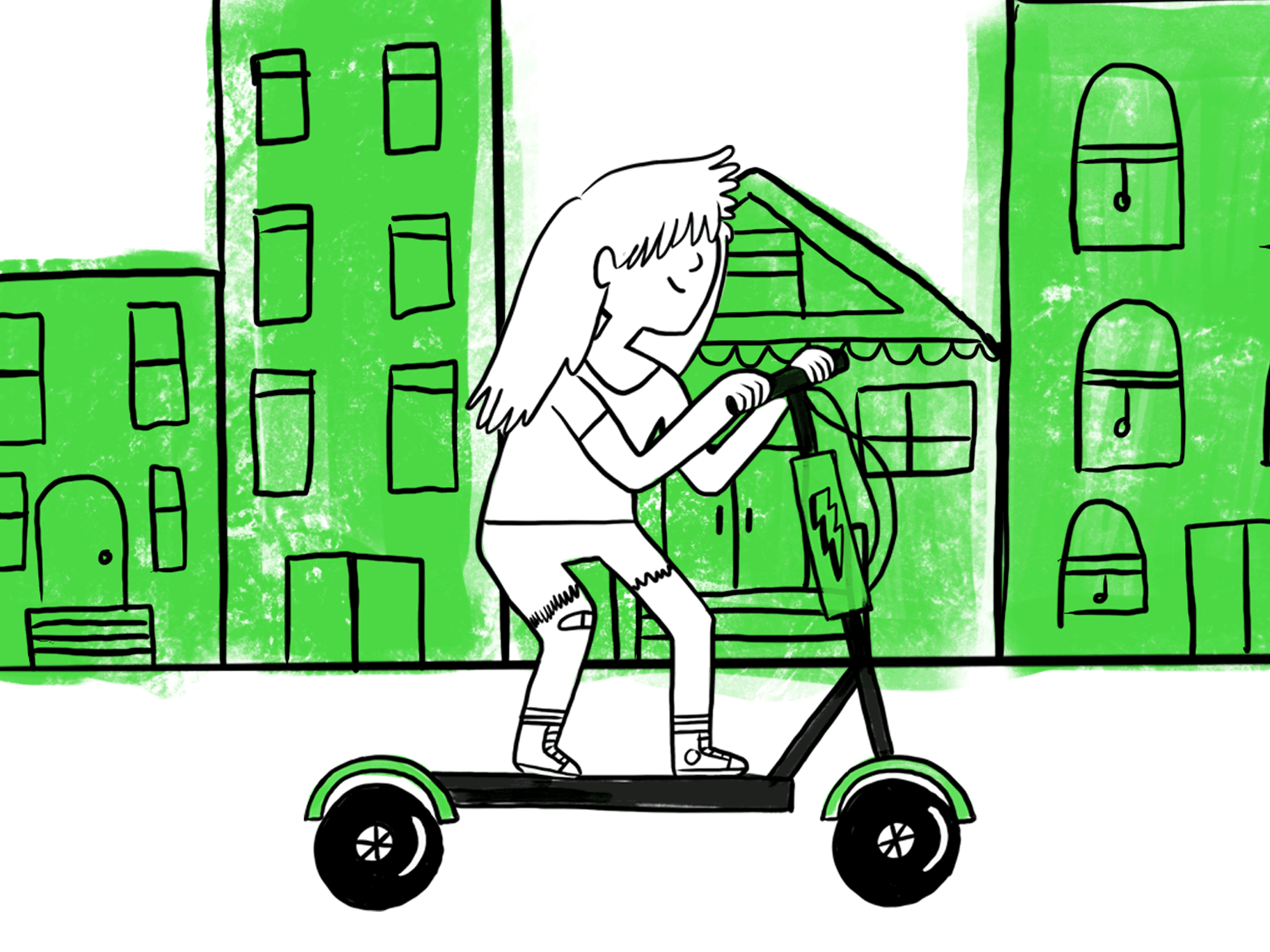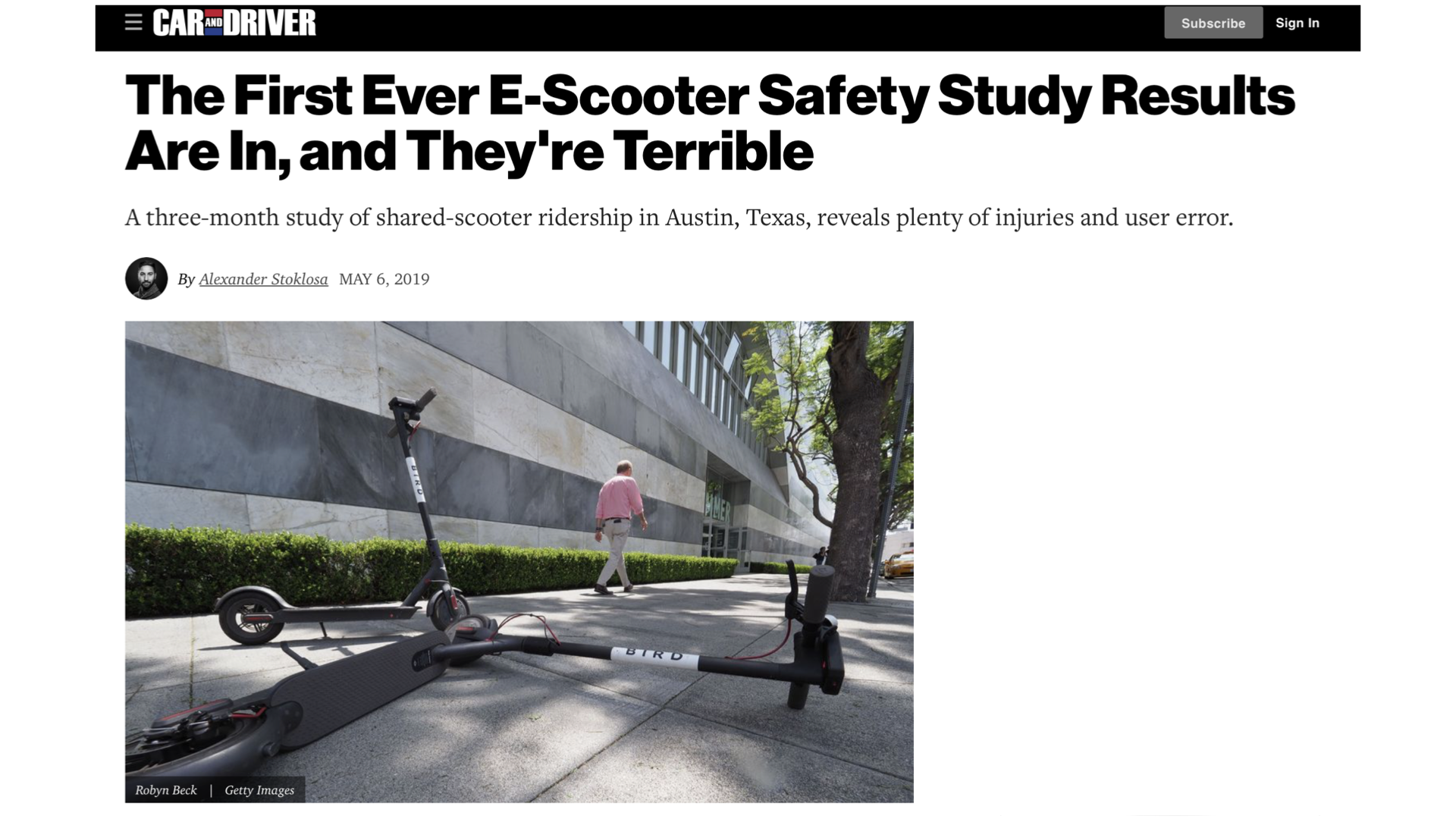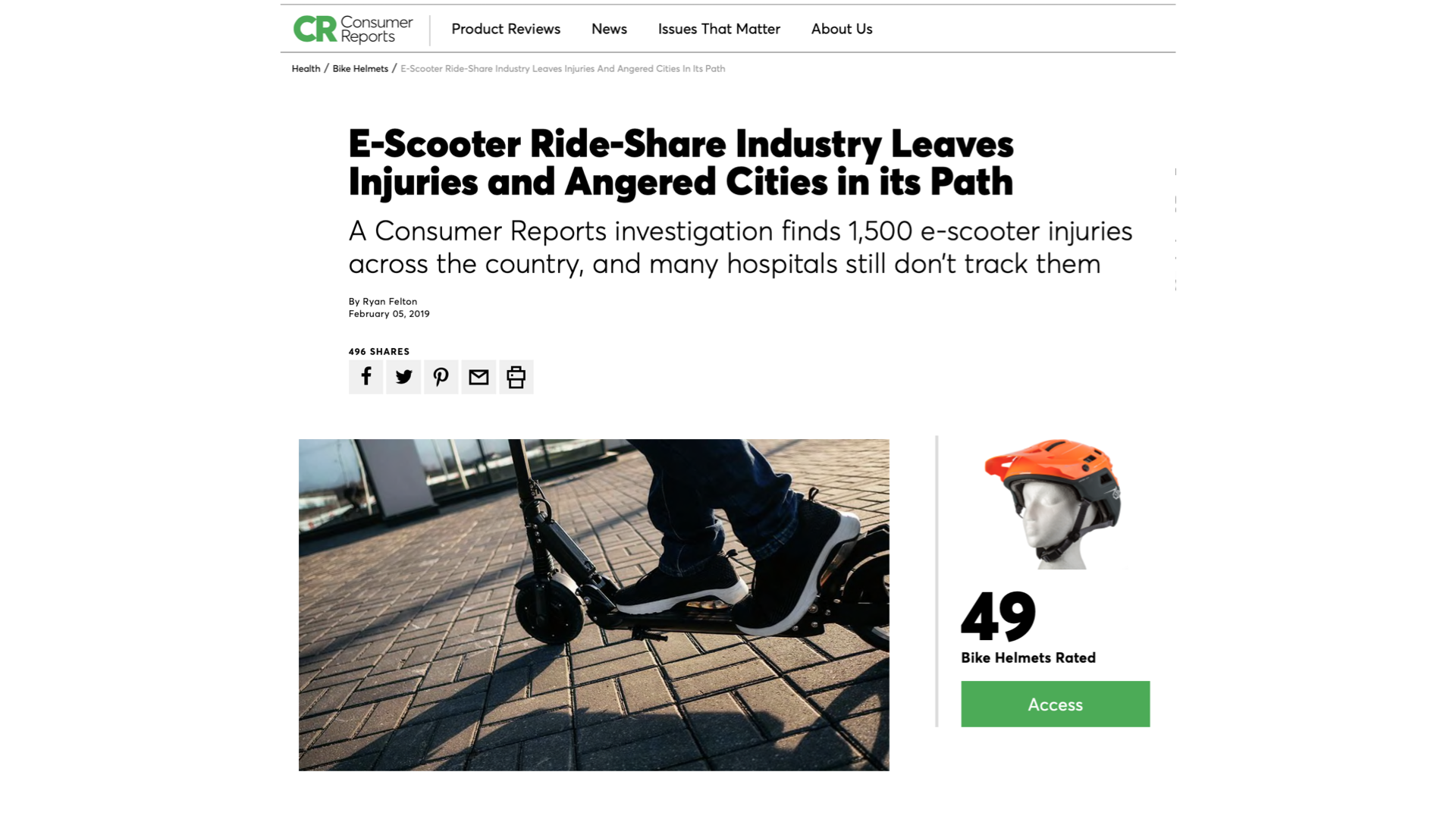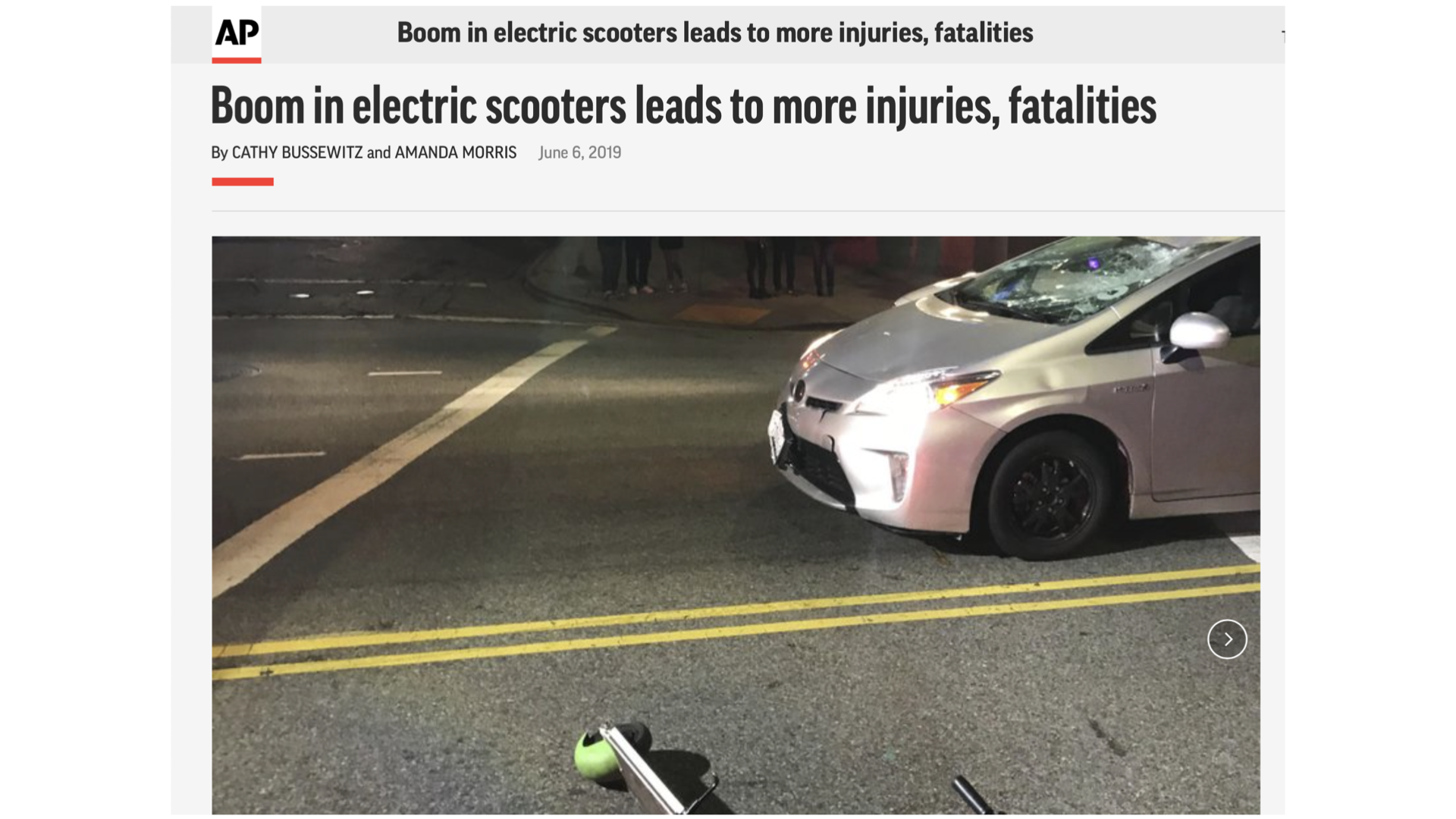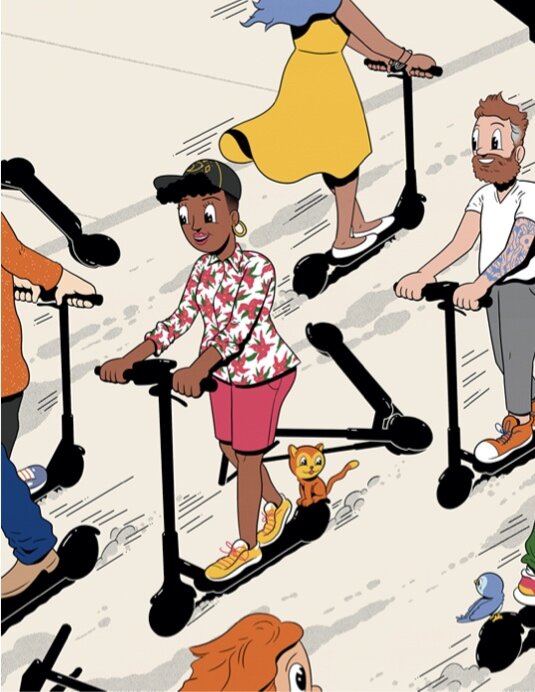Transportation & Safety Design
Creating Safer MicroMobility
Duration
3 months (during COVID-19 Shelter in Place order)
Tools
Sketch, Keynote, Adobe: PS, Illustrator
Background
After a short ride on a rental scooter left my partner with a serious injury, I was inspired to explore ways to enhance the safety of micromobility products.
Remember this?
In the 1960s, the Jetson’s gave us a futurists’ glimpse at what transportation could look like in the not so distant future.
But somehow we ended up with…
We clearly haven’t made it to the Jetsons version of getting around. Instead we’ve found ourselves being reacquainted with a much older technology
What Happened?
Rather than revolutionary design, innovation in micromobility has been mostly evolutionary. This approach has led to the electrification of human-powered vehicles such as scooters and bikes. It also means that the concerns for safety haven’t changed much over the years.
So, whats’s the problem?
Micromobility products such as e-bikes and scooters are a popular solution for city dwellers looking for a faster way to get around. However, without the use of protective equipment and improved infrastructure, users of these emerging platforms are left vulnerable to serious injury.
As ridership increases, so will the number of injuries unless designers and governments work together to to counteract this dangerous trend.
Design Research
We’re not just talking about sprained ankles and bruised knees either.
According to a recent study performed by the CDC, “Head trauma tops the list of severe injuries involving the use of electric scooters — injuries that in many cases could have been prevented with the use of a helmet.”
Recent headlines demonstrate the gravity of the situation. Numerous reports have concluded that this new mode of transportation is causing an uptick in injuries. The reports also acknowledge that these numbers are only a fraction of the actual injuries experienced by riders because hospitals are just beginning to track this trend. This data is further skewed by the fact that injuries often go unreported when a person doesn’t seek professional medical treatment. Unfortunately, we know this is common for many Americans who struggle to afford the prohibitive cost of healthcare in the U.S.
Statistics generated by SFMTA research into San Franciscans’ attitudes towards bicycle transportation indicate that most people are interested in using bikes to get around. But, roughly the same number believe it’s too dangerous in an urban setting like San Francisco.
Observing User Behavior
Here are a few examples (left to right) of users whose riding behavior presents multiple compromises to their safety:
Starting with the lack of helmet.
Headphones prevent them from being able to hear their environment as they share the road with cars, bikes, and pedestrians.
Then they’ve got one hand occupied by an iced coffee, further reducing the ability to quickly maneuver around obstacles.
It’s fair to assume that this individual shouldn’t be riding on the sidewalk.
A couple sharing a scooter without helmets is a recipe for disaster.
I’d hate to think about trying to stop quickly in a pair of high heels.
Safety by Design
Don’t blame the user.
It’s hard to blame users considering the lack of design going into safety. This demonstrates the amount of UI designated to safety during the onboarding experience for Bird scooters.
We can do better.
The majority of the onboarding experience for providers like Bird, Lime, and Jump is dedicated to educating users how to care and pay for their rentals. Safety by design means prioritizing a user’s wellness at every stage of a product’s design, ensuring their safety is not an afterthought.
Culture of (Ir)Responsibility
Riders are often unaware that there are no protections or guarantees of safety offered with their rentals. This liability waiver is presented one time during onboarding and like most T&C’s will be swiped through and ignored.
The summary of all this legalese is that basically if you find yourself injured for ANY reason, don’t expect any support. Not a great stance for making people feel valued or safe.
Who’s Affected?
Basically, Millennials, a young group of people who are prone to trying new technology. In order fo them remain vital and gainfully employed, it’s important that emerging modes of transportation used for commuting to work don’t cause debilitating injuries.


